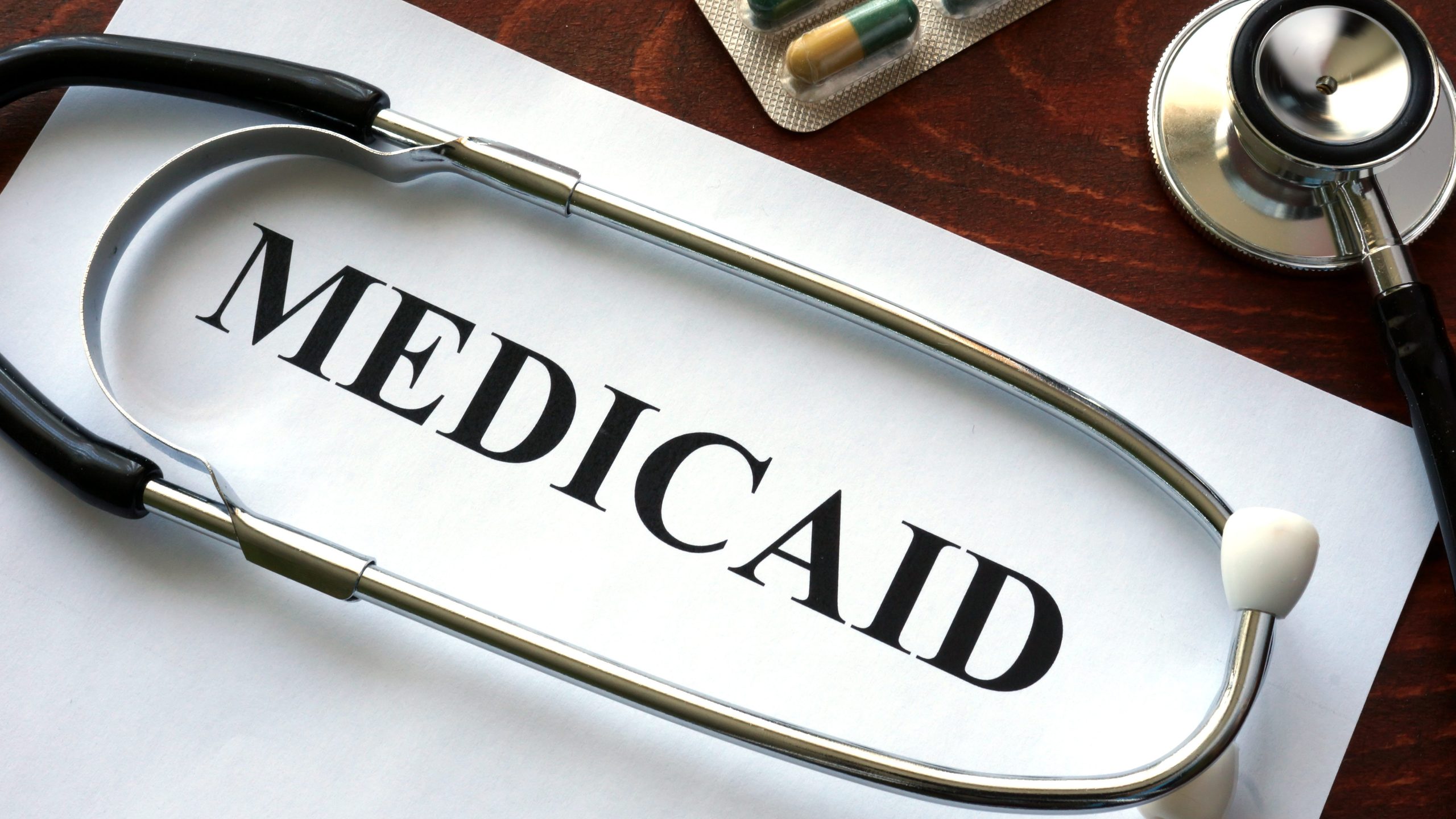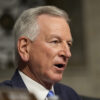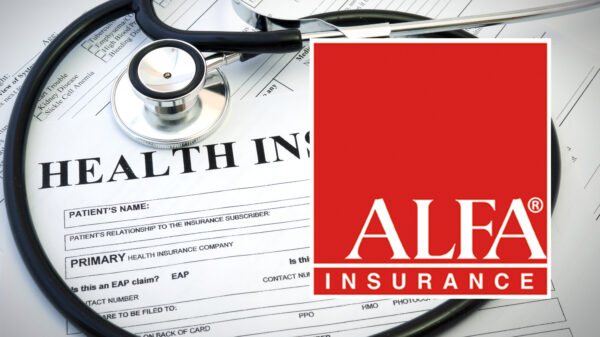In Alabama, Republican politicians have ignored the question of Medicaid expansion or rejected it outright, refusing to bring the issue to the floor of the state Legislature, but an outgoing Republican senator and hospital officials are pushing for it to be on the 2019 legislative agenda.
Voters appear to be on the side against expansion, having overwhelmingly rejected Democratic gubernatorial candidate Walt Maddox, who based a large part of his campaign on Medicaid expansion.
Outside of the Yellowhammer State, though, election day shaped up to be a landmark moment for Medicaid expansion. More states are set to join Medicaid expansion in the next year than in any year since the expansion option created under the Affordable Care Act first became available in 2014.
That momentum in favor of expansion has yet to reach Alabama, which remains as one of the 14 states where politicians have refused to expand the health insurance program for low-income people.
“As we’ve seen more and more states expand, we still haven’t had this issue discussed on the floor of the Alabama Legislature, and we’re now six years down the road, and it looks like we’re emerging to be one of the few hold-out states,” said David Becker, an associate professor at the University of Alabama at Birmingham’s School of Public Health.
Support for the program is spreading to more conservative areas. Voters in three deeply red states — Idaho, Nebraska and Utah — approved ballot initiatives requiring their state to expand Medicaid, and three other states — Kansas, Wisconsin and Maine — elected Democratic governors who are likely to push for expansion.
In Maine, their newly elected Democratic governor is likely to implement a Medicaid expansion plan put on hold by their current Republican governor after voters approved a ballot initiative last year.
Voters’ decisions at ballot boxes in those seven states come after Virginia’s Legislature earlier this year chose to support expansion, meaning eight states will likely expand or begin expanding their Medicaid programs over the next year. Virginia is already enrolling new beneficiaries.
Despite what appears to be a solid opposition among Alabama Republicans, some public health experts and hospital officials, including the Alabama Hospital Association, are issuing dire calls for a renewed debate.
“Medicaid expansion is the one thing the state can do to prevent more hospital closures, loss of jobs, and cutbacks on services,” said Danne Howard, the association’s chief policy officer.
The association — and the more than 100 individual hospitals it represents across Alabama, many of them rural and some of them teetering on the edge of closing — view the situation as so dire that the association plans to launch a renewed effort early next year to bring the discussion back to the forefront ahead of the 2019 legislative session, when a new class of state lawmakers will take office.
“It will impact or it will help rural hospitals because there are a large number of uninsured and unhealthy people in rural Alabama,” Howard said. “Alabama is predominantly a rural state, and between Medicare, the uninsured and Medicaid, that is the significant volume of patients in rural hospitals.”
A ‘critical’ need
Rural hospitals across the country, but particularly in non-expansion states like Alabama, are closing at an alarming rate, largely because an influx of money from more folk covered by Medicaid was intended to offset cuts to Medicare reimbursements built into the Affordable Care Act, President Barack Obama’s 2010 health care law.
With no offset there, hospitals have lost money. A solution needs to come quick, experts have said.
Six rural Alabama hospitals have closed since 2011, and more were closing before that year.
Though a few have reopened because of local tax increases, the situation could get worse. Nearly 90 percent of the remaining rural hospitals in Alabama are bleeding money — operating at a loss and routinely cutting back on staff and services, according to the association.
“Hospitals have been living on their reserves, and those reserves are nearing the end, and that’s why you are seeing more hospitals close,” Howard said, noting that a number of issues have led to the dire straits for hospitals, though all of the issues are related to low reimbursement rates one way or another.
Some Republicans have seen the negative impacts in their districts.
“We can’t continue to close rural hospitals and devastate rural Alabama with inadequate health care,” said retiring Sen. Gerald Dial, a Republican who chaired the Senate’s health committee for two years.
Earlier this year, Dial published op-eds in Alabama newspapers calling on the Republican-led Legislature to consider Medicaid expansion. He’s one of the few Republicans who has called for at least a partial expansion under revised rules.
“They can fund this,” Dial told APR. “This is so critical.”
Rural hospitals, the ones in the most danger of closing, are often the only place within a timely distance where rural residents — like those in Dial’s east Alabama district — can get care.
“It even affects the farmers,” Dial said. “If a farmer is out there, and he breaks a leg or gets an arm cut off, is he going to die before he can get 70 miles to a hospital? Or can you run him 10 miles down the road and get him to a hospital and get him some care? It affects every one of us.”
The potential for economic growth
There are some positives in the conversation. When Becker and his partner at the UAB School of Public Health released their economic analysis in 2012, they were tailoring it for a particular audience.
“We wrote this report kind of realizing the audience who would be receiving it,” Becker said in an interview. “That we kind of understand the political environment of Alabama, and tugging at the heartstrings might not be the most effective strategy in making the case for expansion.”
Their report found that expansion would cost the state about $770 million over the first seven years in costs, but could potentially result in $20 billion in economic growth over the same time period.
Beginning in 2014, the federal government would have financed 100 percent of the costs for those made newly eligible for Medicaid until 2016.
After that, the federal match phases down to 90 percent by 2020, where it will stay, meaning for every dollar the state spends on new enrollees, it would get $9 in return from the federal government.
Though Becker’s report is now six years old, the general takeaways still apply, he said. “The tax revenues generated from expansion would exceed the cost to the state, and so in that sense, it was just sort of a win-win proposition,” Becker said.
Becker’s analysis found that after the first year of expansion, Alabama could likely finance its portion of the new costs with the new tax revenues that would result. The hospital association and Dial have made similar arguments.
“We’re losing about $700 million (in federal matches) in Alabama every year because we haven’t expanded, and we continue to see our rural hospitals close,” Dial said. “That just devastates that opportunity to have economic expansion in rural areas if you don’t have adequate health care. Somebody else is getting our $700 million, and we’re not saving the taxpayers any money.”
For Howard, it isn’t just about the potential for economic growth; it’s about preventing economic losses.
“The fact is hospitals are amongst the top employers in this state. In most rural communities, they are the top employer,” Howard said. “If you look at the health care benefits alone, that ought to be enough to drive the right decision; however, it’s not been. So you have to look at the economics.”
If more hospitals close in rural areas, Howard said the economic impact could be devastating.
“Rural communities cannot continue to thrive, cannot attract businesses, can’t retain the businesses they have now with a hospital failing,” Howard said, adding that the loss of a hospital can further exacerbate population loss, too.
“Young couples are wanting to start families, and they know they are going to have to drive over an hour to a hospital when it’s time to deliver that baby, why would they stay in that community?” Howard said. “You don’t have the prospect of better-paying jobs because you can’t attract business because there’s not a viable health care system.”
But the economic arguments haven’t worked, either, and Republican leaders have pushed back against those, saying the conversation should be about the quality of health care — not job creation.
Funding problems could worsen
As legislators return to Montgomery in March, they’ll face more uncertainty.
Additional cuts to Disproportionate Share Hospital Payments — a payment mechanism that supports many hospitals with a disproportionate number of low-income, uninsured patients and uncompensated care — could go into effect on Oct. 1, 2019, when the fiscal year 2020 begins.
The bulk of those cuts have been routinely delayed by the Republican-controlled Congress since they were set to take effect in 2014 — mainly because it would negatively hit Republican, non-expansion states.
But with Democrats heading into a majority, it isn’t so certain that those cuts will be delayed again.
Cuts to DSH payments could cost Alabama hospitals between $70 million and $156 million. More than 75 percent of Alabama’s more than 100 hospitals receive DSH payments. Those cuts could severely impact both rural and urban hospitals that care for uninsured, low-income patients. Experts fear those cuts could spur a health care crisis that isn’t just confined to rural hospitals and the areas they serve.
That’s because it’s not just rural hospitals that are struggling. Some larger hospitals, including DCH Regional Medical Center in Tuscaloosa, are having issues, too, because they care for a large number of uninsured patients.
Cuts to DSH payments already implemented have cost that system $15 million since 2013, the Tuscaloosa News reported.
Hospitals like those are barely operating in the black, and it wouldn’t take much to put them in the red.
“If the state has not expanded Medicaid in 2020, as the DSH cuts are scheduled to take effect, that will close a significant number of hospitals,” Howard said. “That will cripple. That will be the straw that the hospitals can’t survive.”
Some Republican lawmakers and officials have privately expressed concern about the DSH cuts. If they’re not delayed again this year, they said, it could force the state’s hand.
No appetite for the conversation
Despite the concerns about greater cuts in funding for hospitals and the potential loss of access to comprehensive care in rural areas, Republican leaders have said publicly that there is little appetite to resume a debate about Medicaid expansion.
Gov. Kay Ivey has rejected discussion about Medicaid expansion, and Senate President Pro Tempore Del Marsh, R-Anniston, said in an interview that expansion is unlikely to be on the agenda.
“Among the Republican leadership and Republican caucus, when discussions have been made, there has been no initiative, if you will, to expand Medicaid,” Marsh said. “In fact, the position has been to control the costs of Medicaid and to put pressure on the health care community to find ways to make it more efficient.”
Marsh said perhaps every rural area doesn’t need a hospital.
“But their argument is not that our hospitals are having a hard time,” Marsh said, referring to the hospital association. “Essentially what they’re saying is that they’re having a hard time keeping the hospital the size it is and paying all of their employees. The question is, ‘Okay, is the hospital too big for the area?’”
Dial, who is leaving the Alabama Senate after more than 30 years in the chamber, said this is the year for the conversation as it’s become more and more clear that Republicans won’t be able to repeal the Affordable Care Act within a Democrat-controlled House.
“I think the possibility went from 40-60 to 60-40,” Dial said. “I think it’s a 60 percent chance (they will address expansion).”
Dial said the Legislature should consider a partial expansion that would allow the state to expand the program to a certain degree and still qualify for federal funding.
It’s already extremely difficult for anyone to qualify for Medicaid in Alabama, though the program still covers about 1 million people, most of whom are children or disabled. Virtually no childless adults are enrolled in the program.
Adults with children on Medicaid can only receive benefits if they make 18 percent of the poverty level, which is about $3,740 a year in a household of three. Medicaid expansion as outlined in the ACA would allow those making up to 138 percent of the poverty level, $16,753 for an individual and $28,676 for a household of three, to qualify for benefits
Estimates vary, but between 75,000 and 300,000 Alabamians would qualify for coverage in expansion. At least 75,000 make too much to qualify under current eligibility rules but make too little to qualify for subsidies from the federal government for marketplace programs, according to a June report from the Kaiser Family Foundation.
Some states — Arkansas, Massachusetts and Utah among them — have tried to get a waiver to limit eligibility for adults up to 100 percent of the poverty line, significantly less than the number provided in the ACA. President Donald Trump’s administration reportedly initially denied those requests, but showed some willingness to consider it after midterms and has left the door open for the future.
“We’re talking about picking and choosing different things that could help rural health care,” Dial said, “and looking at only taking those we can afford to fund on our level. I think the state from the General Fund could create anywhere from $75 million to $100 million next year to expand into that area and bring $400 million or $500 million back to the state in benefits that will equate into money for jobs, money for expansion and money for equipment.”
Medicaid is by far the largest budget item in the state’s General Fund budget, which pays for all non-education-related programs. Last year, the costs surpassed $750 million, and it’s expected to grow as lawmakers prepare the FY2020 budget, and Marsh said there isn’t room for much more spending.
Dial said he’s spoken with a number of House and Senate leaders who would be amenable to a conversation, and he thinks there could be action this year.
“It’s not going to be at the top of the agenda like probably the fuel tax, which is probably going to be the No. 1 thing now, but I think it’s going to be critical, and I think you’ll see some action this first year on it, because I think those people understand how critical it is,” Dial said.





















































